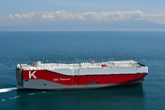BP, Eni and Shell are best-in-class
Published by Joseph Green,
Editor
LNG Industry,
Investors should feel confident about BP’s, Eni’s and Shell’s increased wave of new project approvals during the recent downturn. A Rystad Energy review of the performance of their recent projects against those of other operators shows that the three European oil giants have outperformed their peers.
For projects that have started up since 2014, majors have collectively achieved greenfield costs of US$13.50 per barrel of oil equivalent. These development costs were in addition to their collective US$8.80 per barrel of oil equivalent lifting costs from 2017. The below analysis allocates 100% of a project’s cost to the operator who is executing the project (i.e. does not split to equity shares).
Matthew Fitzsimmons, Vice President at Rystad Energy, commented: “It is remarkable that BP, Eni and Shell introduced over US$109 billion of new greenfield projects below the industry average greenfield cost and still were able to still achieve industry-leading lifting costs in 2017. BP’s $6.0 billion investment in the Khazzan Phase 1 and Makarem projects in Oman highlighted their execution excellence by achieving greenfield costs below US$5 per barrel of oil equivalent.”
Conversely, despite starting-up nearly US$75 billion worth of project investments, ExxonMobil’s greenfield performance on the PNG LNG Phase 1 and lifting cost performance on Kearl Phase 2 have deteriorated their overall marks to trail industry averages (weighted average for majors). “We’ve noticed that ExxonMobil’s greenfield investments have been virtually non-existent since 2014,” Fitzsimmons said. “Their only major greenfield project approval since 2015 was the US$4.4 billion Liza Phase 1 FPSO project in Guyana.” However, the outlook is not all glum for the world’s largest IOC. “We’ve also noticed that ExxonMobil has improved its greenfield cost performance since 2014 as it gears up to take on the challenge put forth by the company CEO to double earnings by 2025,” Fitzsimmons noted.
Looking to build on recent success, BP, Eni and Shell have all been aggressively approving greenfield projects during the downturn. Since 2015, the trio have approved some US$64 billion worth of greenfield projects. BP alone approved over US$27.6 billion of projects during the recent downturn. “BP’s best-in-class lifting costs from 2017 of below US$6 per producing barrel should give investors confidence when all these new projects come on-line,” Fitzsimmons said. He added: “Eni’s recent US$25.4 billion greenfield approvals have exclusively been to bolster its offshore portfolio. The company’s investments in several mega offshore projects, such as Coral FLNG, Sankofa East FPSO and three phases of Zohr, are good news in relation to the offshore industry’s attempt to rebound.”
Collectively, majors are on pace to approve over US$37 billion in projects during the calendar year. Over 30% (US$12 billion) of those were approved during the second quarter.
“It comes as no surprise that BP, Eni and Shell have led the way in new project investments during the recent downturn. The three majors are well positioned to build on their industry leading greenfield and lifting cost performance,” Fitzsimmons concluded.
Read the article online at: https://www.lngindustry.com/liquefaction/25072018/bp-eni-and-shell-are-best-in-class/
You might also like
‘K’ Line receives LNG-fuelled car carrier
An LNG-fuelled car carrier with a capacity of 6900 vehicles has been delivered to Kawasaki Kisen Kaisha, Ltd.

